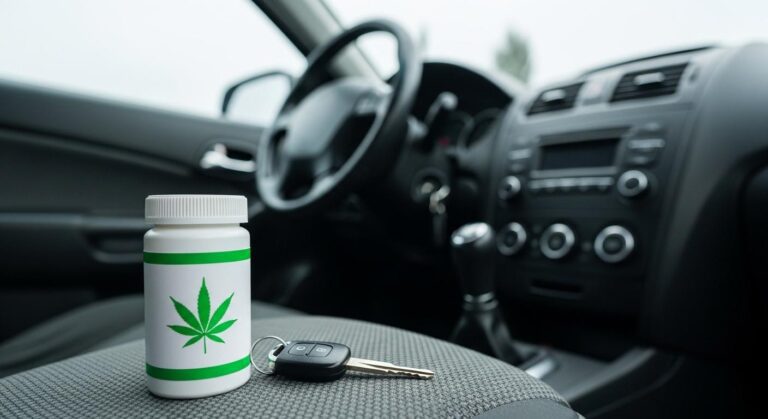Contents
- 1 Understanding Medical Cannabis in Australia
- 2 Medical Cannabis and Driving: Legal Considerations
- 3 How Cannabis Affects Driving Abilities
- 4 Safety Tips for Patients Using Medical Cannabis
- 5 Alternatives and Resources for Safe Transportation
- 6 Navigating Insurance and Medical Cannabis Use
- 7 Balancing Health Needs with Legal Responsibilities
- 8 Advocacy and Future Directions
Understanding Medical Cannabis in Australia
Medical cannabis—once a term whispered in hushed tones, now part of everyday conversations. In Australia, it refers to cannabis prescribed specifically for medicinal purposes. It’s like the difference between a friendly chat over coffee and an official board meeting; same participants, different intentions. The legal framework for medical cannabis in Australia is robust. Since 2016, patients with eligible medical conditions have had access to cannabis-based medicines, provided they navigate the labyrinth of regulations with the help of their healthcare professionals.
So, who’s eligible for this green therapy? Patients suffering from chronic conditions like epilepsy, multiple sclerosis, and chemotherapy-induced nausea often find cannabis a viable option. It’s like that secret ingredient in your grandma’s casserole—unexpected, but oh-so-effective. However, acquiring a prescription involves jumping through legal hoops, and not everyone qualifies. The Therapeutic Goods Administration (TGA) and state or territory health departments must greenlight the application, making it a selective club.
Medical Cannabis and Driving: Legal Considerations
Ah, driving and cannabis—a combination that stirs up a cauldron of legal and ethical considerations. In Australia, driving under the influence of cannabis is illegal, akin to taking your pet kangaroo for a spin on the freeway. The repercussions are severe, from fines to losing your driving license. Each state has its own set of laws, adding a layer of complexity. In fact, Tasmania might have a different take than New South Wales, as if they’re siblings with varying opinions on dessert preferences.
One of the critical issues is the legal blood THC limits. Unlike alcohol, where limits are clear-cut, cannabis testing opens a Pandora’s box. The standard tests measure THC, but they don’t always correlate with impairment. So, you might find yourself in a conundrum—testing positive long after the effects have worn off.
How Cannabis Affects Driving Abilities
If you’ve ever driven after a good night’s sleep and then after binge-watching a whole season of your favorite show, you’ll appreciate the difference in reaction time and perception. Cannabis affects driving abilities by impairing motor skills and judgment. Reaction times are slowed, turning what should be a swift dodge into a sluggish crawl.
Studies comparing cannabis and alcohol’s impact on driving are illuminating. Despite popular myths, cannabis doesn’t enhance driving skills like herb-infused coffee. Evidence indicates that high THC levels can lead to poor lane discipline and reduced attention to detail—a bit like that friend who’s always texting in the middle of dinner.
Safety Tips for Patients Using Medical Cannabis
For patients using medical cannabis, understanding personal impairment is crucial. Here are some tips for ensuring safety:
- Always consider taking a break from driving after ingesting cannabis—think of it as giving your body a chance to reset, like a computer reboot.
- Store medical cannabis safely to prevent others from accidentally finding it, much like you’d hide your most prized chocolate stash from a hungry roommate.
- Discuss usage with your healthcare provider to tailor choices to your health needs and minimize risks.
Alternatives and Resources for Safe Transportation
Can’t drive? No worries! Australia offers a bouquet of alternatives to keep you moving without a wheel in hand. Public transportation, riding with friends or family, or even hailing a ride-sharing service are safer options. Plus, many communities offer resources designed to assist those who might otherwise feel stranded.
A bit of creativity can turn a transportation challenge into an opportunity to catch up with a friend en route or enjoy the scenery, guilt-free!
Now, let’s talk numbers. Insurance companies often view medical cannabis use with a skeptical eye, much like a dragon scrutinizing a would-be knight. Cannabis use can affect your car insurance policy and premium, especially if cannabis-related infractions are noted on your driving record.
It’s crucial to be transparent with insurers about your medical cannabis use. Honest declarations can prevent hiccups later, ensuring your claims don’t get stuck in the land of bureaucracy.
Balancing Health Needs with Legal Responsibilities
For medical cannabis patients, balancing health needs with legal responsibilities is a tightrope act. Patient education becomes the safety net that makes this balance possible. Staying informed about ever-evolving laws helps patients remain compliant and confident in their healthcare choices.
Encouraging open dialogue with legal and medical professionals is key. A well-informed conversation can navigate even the trickiest of legal turns.
Advocacy and Future Directions
The winds of change are blowing in the world of cannabis legislation. As advocacy groups continue to push for clearer, more flexible laws, public awareness plays a vital role. Educating the community about the responsible use of medical cannabis is essential for progress.
Looking ahead, Australia may see shifts in regulations, with potential for more nuanced laws akin to those in parts of the United States, like New York. The dream? A landscape where health needs and legal responsibilities coexist harmoniously, with driving safety always in the passenger seat.
In the end, it’s about cultivating a culture of understanding and cooperation, ensuring that medical cannabis remains a beacon of hope for those who need it, without putting anyone behind the wheel unprepared. And, really, isn’t that a drive worth taking?



